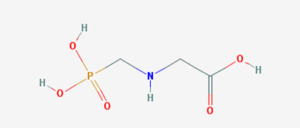On August 10, 2018, a California state jury for the first time found Monsanto’s blockbuster herbicide, ROUNDUP®, was the cause of cancer, finding the weed killer caused a plaintiff’s terminal non-Hodgkin’s lymphoma and delivered to Monsanto a liability bill in the amount of $289 million. Although this blog does not normally analyze trial court decisions, because this is the first in hundreds of filed cases with 4,000 plaintiffs where a jury has found Monsanto liable for its product, discussion of this case and the more-than-likely appeal is necessary for the public discourse. We will continue to follow the case, and the supporting patents-at-issue, throughout the lengthy litigation process.
The facts are as follows.
Monsanto Co., owns a number of patents directed to glyphosate, its compositions, compounds, methods, and uses. Glyphosate ((N-(phosphonomethyl)glycine, C3H8NO5P) is the active ingredient in ROUNDUP®, the most widely-used herbicide and crop desiccant.

Dewayne Johnson worked as a gardener for a local school district outside San Francisco, California, whose job was to spray ROUNDUP® regularly. He was diagnosed with non-Hodgkin’s lymphoma in 2014, and after undergoing chemotherapy treatments in 2017, his oncologist gave him only a few months to live. He, however, lived long enough for the verdict to be delivered in the trial.
Johnson filed suit in 2016. As a result of the diagnosis, Johnson filed a motion for trial preference under C.C.P. §36(d)-(e), or an expedited trial date in light of an “illness or condition raising substantial medical doubt of survival of that party beyond six months.” Monsanto opposed, but prior to the court ruling on the motion, the parties stipulated to 1) Johnson’s withdrawal of the motion for trial preference, 2) Monsanto’s agreement to not remove the case to federal court, and 3) a trial date of June 2018. Monsanto then sought a motion for continuance of trial, in order for the trial to be presided over by Judge Curtis Karnow, who had presided over the case until now, but due to another trial in his department, could not preside over this case; the case would be returned to the presiding judge for trial assignment, which was assigned to Judge Suzanne Bolanos. Judge Karnow denied Monsanto’s motions for continuance of trial and in limine to exclude various evidence from trial.
Bayer AG acquired Monsanto for $66 billion, after the Department of Justice cleared it of anti-trust grounds, and closed in June 2018. Its stocks tumbled when news of the ROUNDUP® trial verdict hit European markets.
It is a virtual certainty that this case will be appealed, first to the California Court of Appeal, then up to the California Supreme Court, and quite possibly to the U.S. Supreme Court. Much more of this case will be litigated, but unfortunately, it will probably take place long after the plaintiff will have died as a result of his non-Hodgkin’s lymphoma, which is terminal. A related case in the federal courts is still in litigation.
We will update the blog with any further developments in this case.

4 thoughts on “Monsanto Hit with $289M Glyphosate Jury Verdict”
Comments are closed.